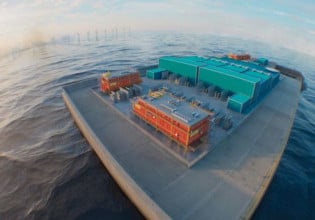Energy Department Announces Funding to Develop Plug-and-Play Solar Energy Systems for Homeowners
As part of its SunShot Initiative, the Department of Energy announced up to $5 million available this year to develop "plug-and-play" photovoltaic (PV) systems that can be purchased, installed, and operational in one day. This effort is part of the Department’s broader strategy to spur solar power deployment by reducing non-hardware, or "soft" costs, such as installation, permitting, and interconnection, which currently amount to more than half of the total cost of residential systems. The funding will help drive innovations to fundamentally change the design and installation of residential PV systems, reducing costs for homeowners and simplifying installations and grid connectivity.
"Providing families and businesses with new choices to use American energy resources that can save them money is an important part of President Obama’s all-of-the above energy strategy," said Secretary of Energy Steven Chu "The Department’s announcement today supporting plug-and-play solar energy technologies will help make it easier and cheaper for consumers to adopt clean, affordable solar energy, while supporting U.S. manufacturing leadership in the next generation of clean energy technologies and diversifying America’s energy portfolio."
As the costs of solar PV modules continue to come down, "soft" costs and other non-module hardware costs, such as electronics and mounting hardware, now account for a majority of the total costs of systems. This offers significant opportunities to bring down costs through more efficient installation and permitting processes or new ways to affordably and effectively connect solar panels to the grid.
Plug-and-play solar energy systems will make the process of buying, installing, and connecting solar energy systems faster, easier, and less expensive, potentially unlocking major cost reductions in this area. Plug-and-play PV systems could be installed without special training or tools, and simply plugged into a PV-ready circuit, through which an automatic detection system would initiate communication between the solar energy system and the utility. Plug-and-play systems are already in wide use in the computer and automotive industries. The Energy Department believes that similar innovations can be made in the solar energy industry to reduce costs and simplify installations.
As part of a planned five-year program, the Energy Department will invest an initial $5 million this year for two projects that will develop innovative plug-and-play prototypes through partnerships with universities, industry, utilities, and other stakeholders. The Department plans to make an additional request of $20 million to Congress over the next four years to support these efforts.
More news and information regarding the latest developments in Smart Grid electronics can be found at Darnell’s SmartGridElectronics.Net.






